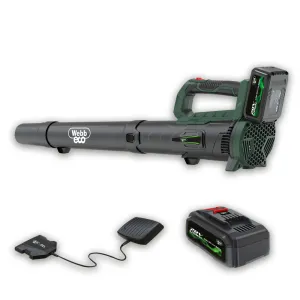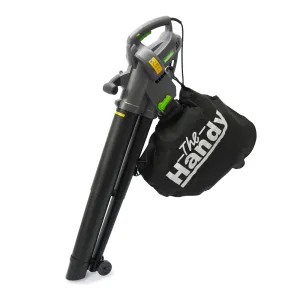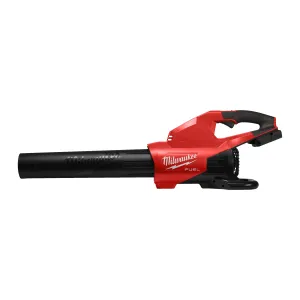First up, make sure you wear the correct PPE before using your leaf blower. Eye protection is important to stop small pieces of leaf or grit flying up into your eyes. We’d also recommend gloves and safety boots.
Depending on the type of leaf blower you have, you might want to consider ear protection. Petrol blowers tend to be noisier than their battery-powered counterparts.
Which blower is best for you?
Power
As a general rule of thumb, the larger your garden, the more power your blower will need. If you choose a high-powered blower for a very small garden, you may find leaves harder to control.
Plug-in versus cordless
If you have a small garden, a plug-in corded blower should be fine. For a larger garden, you should consider a cordless blower to give you the mobility and reach you’ll need. But remember to check the battery life of cordless blowers to ensure you’ll be able to complete your project on a single charge.
Orientation
Left-handed? Make sure your blower is usable in any orientation / on any side of your body. A good leaf blower will operate in any orientation with ambidextrous controls.
Weight
Consider your own strength and any limitations you may have in carrying the leaf blower for extended periods of time.
Well-designed leaf blowers will be well-balanced, and some may come with a shoulder strap to help you distribute the weight if needed.
When to use a leaf blower
It might be obvious, but trying to move leaves when they’re wet will not be as effective as doing it when they’re dry, so always wait for leaves to dry out after wet weather.
It’s usually best to wait until any morning dew has evaporated; early afternoon is recommended.
It’s sensible not to use a leaf blower if you’ve applied fertiliser, pesticide or herbicide, as this could be blown into the air causing a potential hazard.
Choose a still day when there is no wind. You don’t want to work against the elements and have your hard work undone by gusts of wind.
If there’s a breeze, work with it and blow in the same direction rather than against it.
Where to use a leaf blower
Most leaf blowers can be used on most surfaces. However, the technique and speed will vary between leaf blowing on a lawn and leaf blowing on a hard surface or gravel.
For gravel surfaces, you will need to slow the speed to avoid moving gravel around and throwing up small stones.
On a large lawn, going full speed will certainly get the job done quicker. However, if you have a particularly powerful blower, make sure you have a feel for its full capability, as blowing too close to grass with a high-powered blower can damage the turf.
Your leaf blower will come with manufacturer’s instructions and recommendations for maximum speed. Make sure you read these before embarking on leaf blowing for the first time.
Blowing technique
Planning
Decide where you want to create leaf piles for collection later. Creating one enormous pile of leaves might be tempting but collecting them will be more of a challenge - and the higher the leaf pile, the more chance of the wind redistributing them!
Aim for a series of smaller piles that can be collected easily with a trolley or wheelbarrow ready for mulching or composting later.
Work in one direction blowing the leaves towards their destination pile. You might want to blow them onto a tarpaulin to make collection easier.
Angle
Keep the blower pointed down to avoid blowing leaves and dust in all directions, and to prevent damage to other plants.
Direct the air underneath the leaves to lift and move them. If you blow on top of leaves, it will simply disperse them in all directions.
You might find you need a few practice runs until you feel comfortable with your blower technique and its capacity and speed.
Motion
Use smooth ‘sweeping’ arcs as you blow, directing the leaves to their destination. Work slowly and methodically for the most efficient results.
Whichever leaf blower you choose, always make sure you follow the manufacturer’s instructions and store it in a safe, dry place once you’ve finished your leaf blowing project.







